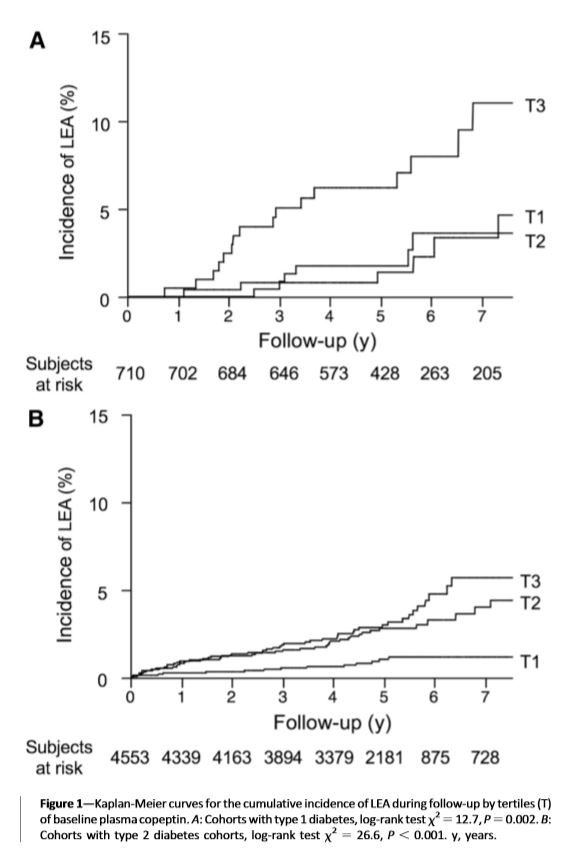Plasma Copeptin and Risk of Lower-Extremity Amputation in Type 1 and Type 2 Diabetes
Lower-extremity amputation (LEA) is a major complication of diabetes and is associated with low quality of life and higher risk of mortality. The high prevalence of LEA in people with diabetes is mainly related to the presence of foot ulcers, and this complication is driven by a range of factors including peripheral arterial disease, diabetic neuropathy, impaired wound healing, and susceptibility to infection. Despite these well-known causal factors, biomarkers able to predict the risk of LEA are lacking.
Recently, in a prospective cohort of people with type 2 diabetes the use of diuretics was shown to be associated with a higher risk of amputation. This work was driven by the assumption that diureticinduced hypovolemia would worsen hypoperfusion of distal lower extremities, triggering ischemia and necrosis, eventually leading to amputation.
More recent work has identified copeptin (the COOH-terminal portion of the preprovasopressin peptide) as a marker of circulating volume status. Plasma copeptin has been involved in a wide range of pathophysiological processes, especially in patients with diabetes, including the development and progression of diabetic kidney disease and cardiovascular morbidity and mortality.
In line with this hypothesis, in the present investigation, we assessed the relationship between copeptin, a surrogate of vasopressin and therefore hydration status at baseline and the risk of subsequent LEA in people with type 1 and type 2 diabetes.

To read the full paper, head to the following link:
https://link.springer.com/article/10.1007%2Fs00125-019-4835-z





